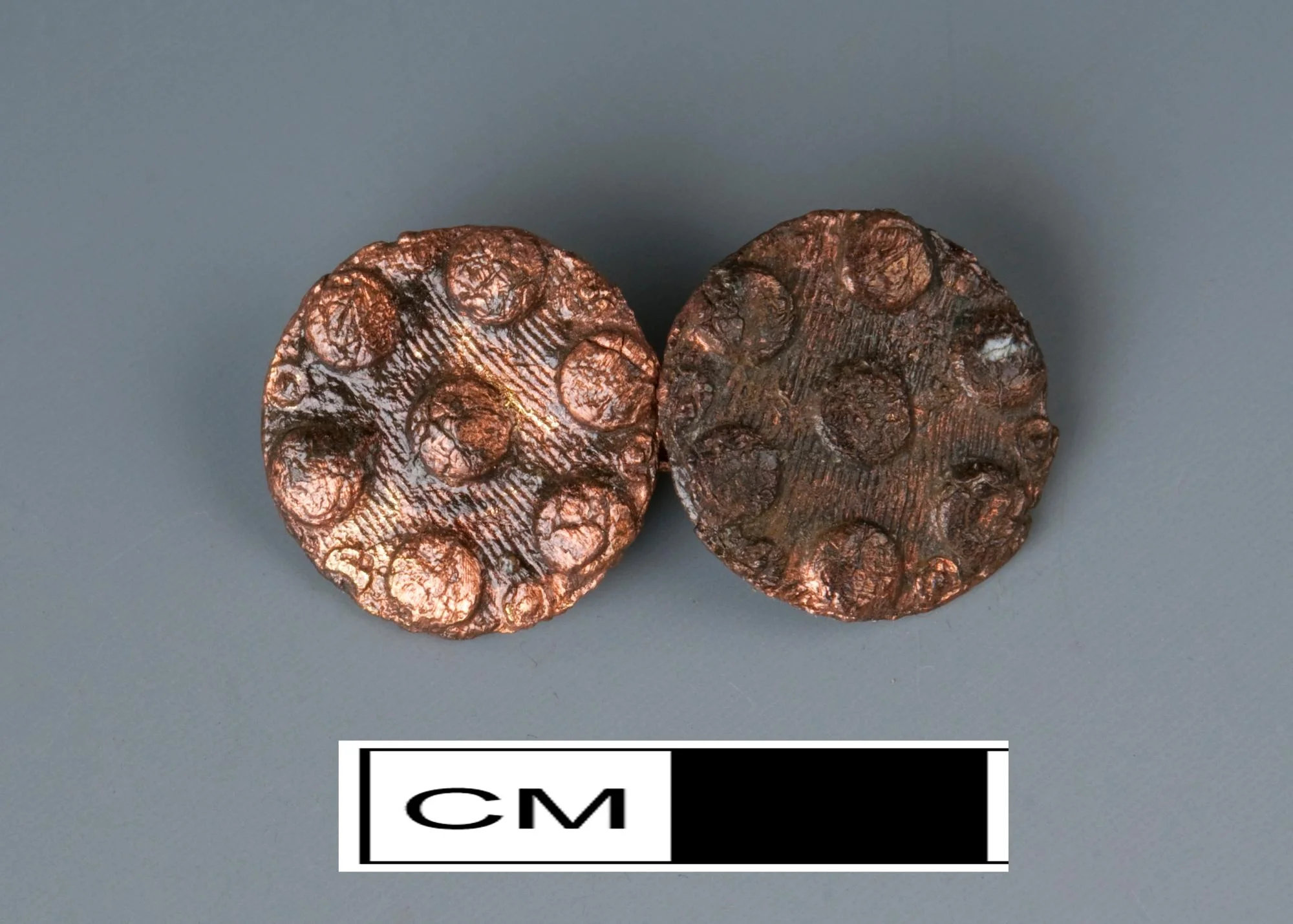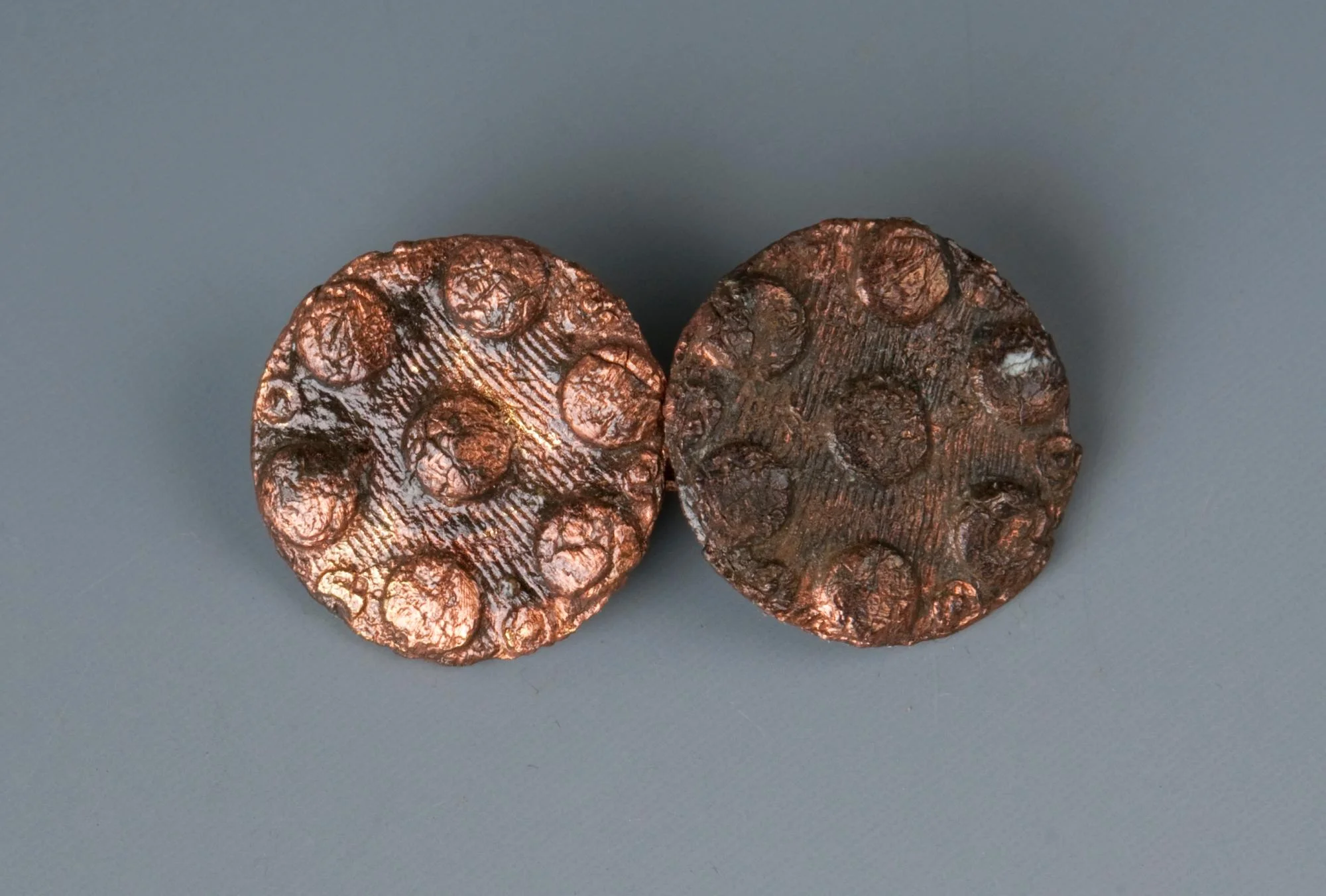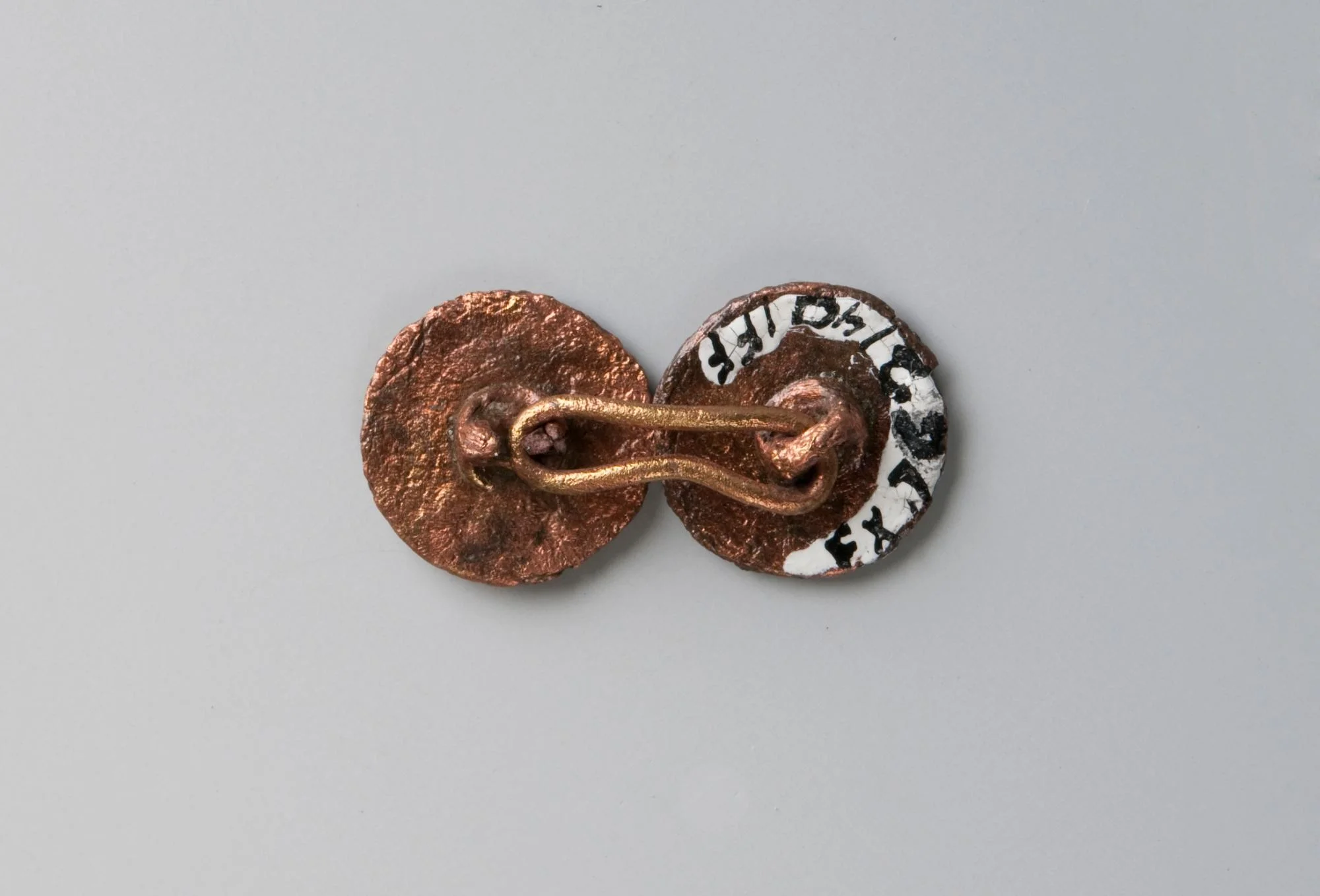Notes
This is a complete linked button, often referred to as a sleeve button. This example is made of cast copper alloy disks joined by a single link. Decoration could be formed through the casting process, or through engraving. In this example, the decorative elements consist of six large dots arranged along the circumference of the button with smaller dots between, and a single large dot in the center of the button face. Additionally, geometric patterns of lines can be seen in the central field of the button faces.
Sleeve buttons served much the same function as modern cuff links, securing shirt sleeves together. Generally, circular forms, such as this, gained popularity in the second half of the eighteenth century. Depending on the material used to embellish these forms, sleeve buttons could be quite expensive, but by and large these were among the cheapest metal buttons sold in stores.
Object Type
Has it Been Conserved?
Yes
Where Was It Found?
Project Site: House for Families [more details]
Material
Manufacturing Technology
Form
Shape
Completeness
Decorative Technology
Decorative Notes
Cast design consisting of 7 raised circles (6 along circumference and 1 in the center)
Date
18th century
Country of Origin
Dimensions
12.35mm x 0.84mm x 12.35mm (W x H x L)
Illustration shows object in comparison to the size of a quarter
Weight
1.6 gram(s)
Object Number
1785993
DAACS Number
1785993
Project: House for Families
The structure identified as the “House for Families” on the 1787 Vaughan plan likely housed the majority of the enslaved population living at the Mansion House Farm for much of the second half of the eighteenth century. The building was in existence from circa 1760 until it was demolished in late 1792 or early 1793. The archaeological evidence for the structure consisted of a brick-lined storage cellar (44FX762/40-47) measuring roughly six feet by six feet. Historically the cellar served as a handy trash receptacle once it ceased to be used for its original storage function, and through extensive excavation has yielded an extremely rich assemblage of household refuse. The analysis of these remains offers the opportunity to study important aspects of the daily lives of Mount Vernon's enslaved community.
See All Objects From this Dig


 Buttons
Buttons